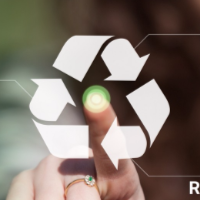Why Legal Videography Is Crucial for Accurate Court Recordings
The function of legal videography in court room settings can not be overstated, as it offers as a necessary tool for protecting the integrity of court records. By recording both verbal and non-verbal interaction, it boosts the clarity of witness statements and shows the subtleties of courtroom communications. This comprehensive paperwork not just aids in decreasing potential misunderstandings yet also supports appellate reviews, thereby enhancing the judicial procedure. The implications of incorporating legal videography right into basic court techniques elevate important questions about its wider effect on the legal system. What might these effects require?
Significance of Visual Proof
In the world of legal proceedings, the value of aesthetic evidence can not be overstated. Aesthetic evidence acts as a powerful tool in developing truths, corroborating statements, and boosting the total clearness of a case. This kind of proof, which includes photos, videos, and layouts, can supply a concrete context that spoken descriptions often lack, thereby offering juries and judges a clearer understanding of the scenarios surrounding a case.
In addition, aesthetic proof help in the retention of info. Human cognition is inherently aesthetic, and people are most likely to keep in mind and comprehend info presented in a visual style. In the court room, this can be important, as engaging aesthetic proof can persuade viewpoints and enhance the story offered by lawful reps.
In addition, making use of visual evidence can minimize misunderstandings and obscurities that typically occur from verbal exchanges. By offering a direct depiction of events, visual proof assists to get rid of subjective interpretations and promotes an extra objective evaluation of the facts. Subsequently, the assimilation of visual evidence right into legal process not just enhances the stability of the judicial process but additionally boosts the probability of achieving a just outcome.
Recording Non-Verbal Hints
Using innovative videography strategies can substantially boost the capture of non-verbal cues throughout legal process. Non-verbal communication, consisting of faces, body language, and eye call, plays a crucial duty in sharing feelings and objectives that might not be explicitly mentioned in spoken statement. legal videography. Lawful videography uses high-def electronic cameras and calculated angles to ensure that these refined signs are videotaped with clarity and accuracy
The capacity to evaluate non-verbal habits can offer valuable context to statements made throughout court sessions. For example, a witness's hesitation or confidence can be analyzed through their position or gestures, potentially affecting the court's understanding of credibility. Furthermore, using close-up shots can assist focus on a speaker's expressions, permitting an extra nuanced understanding of the testament.
Furthermore, integrating multiple video camera angles can produce a comprehensive view of interactions, highlighting characteristics in between events included. This complex approach not only boosts the accuracy of the my latest blog post court record however also aids in maintaining the stability of the judicial process - legal videography. Eventually, capturing non-verbal signs via lawful videography fosters a richer, a lot more total representation of court room proceedings

Enhancing Statement Dependability
The dependability of statement can be substantially reinforced with the use of high-grade lawful videography. Video recordings function as an unbiased medium that records not only the talked words of witnesses yet likewise the nuances of their delivery, consisting of tone, pacing, and emotional expressiveness. This multifaceted paperwork provides a clearer understanding of the witness's integrity and objectives, which can be pivotal in lawful process.
Additionally, legal videography decreases the potential for misinterpretations that might occur from composed transcripts alone. When jurors can observe a witness's behavior and body language combined with their statement, they are better outfitted to examine the credibility and integrity of the evidence offered. This aesthetic context can enhance the testimonial narrative, making it a lot more compelling and reliable.
In addition, the visibility of a video clip recording can prevent possible inconsistencies in statement. Witnesses may be a lot more cautious in their declarations when they recognize they are being recorded, resulting in even more precise and sincere accounts. Overall, top notch lawful videography enhances the honesty of statement, making certain that the court has accessibility to a complete and truthful representation of the facts as shared by the witnesses.
Sustaining Appeals and Reviews
Lawful videography plays a crucial duty in site web supporting allures and evaluations by supplying a detailed aesthetic record of court room proceedings. This aesthetic documents captures not just the spoken words of witnesses and attorneys but also the subtleties of body language, tone of voice, and court room characteristics. Such elements can be essential in understanding the context of statements and arguments offered.
In the appellate process, where the focus is on mistakes of regulation and step-by-step fairness, a video clip record can serve as a crucial tool for appellate courts. It allows judges to review the initial trial context, ensuring that choices are based on a full understanding of the proceedings. The capacity to aesthetically assess the behavior of witnesses or the communications between parties can expose insights that created records may ignore.

Furthermore, lawful videography can assist in clearing up obscurities in statements or step-by-step judgments, thereby reinforcing the view website basis for a charm. By supplying a trustworthy, objective account of what transpired in court, lawful videography not just supports the stability of the legal procedure but also empowers all parties included to make educated decisions regarding their situations.
Simplifying Court Room Procedures
Enhancing court room efficiency, legal videography enhances procedures by providing instant access to visual documents of procedures. This innovation permits courts, lawyers, and courts to take another look at crucial testament and evidence, guaranteeing that all celebrations have a clear understanding of the case. By catching the subtleties of spoken and non-verbal communication, videography improves the document, making it easier to realize the context and weight of testimonies.

Furthermore, video recordings can facilitate remote engagement in hearings, permitting better versatility in organizing and involvement, which is specifically important in complex cases including several stakeholders.
Verdict
To conclude, lawful videography plays a vital function in ensuring exact court recordings by offering necessary aesthetic evidence that records both verbal and non-verbal communication. This method improves the integrity of testaments, supports appellate reviews, and enhances court room processes. By fostering a thorough understanding of courtroom dynamics, legal videography inevitably adds to more equitable judicial results, enhancing the integrity of the lawful system and promoting educated decision-making.